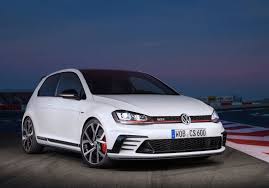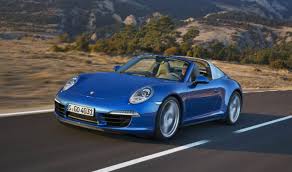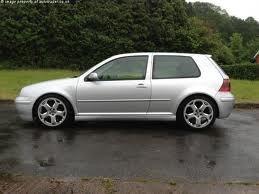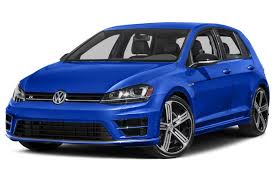


This edition of the Seat Ibiza Cupra 1.8 Turbo is the 6 speed / Manual version and was first brought out in 2015. This was at around the same time as the introduction of the 2016 Bugatti Chiron 8.0 W16 Quad Turbo and the 2015 Koenigsegg Regera 5.0 V8 Turbo.This particular Seat Ibiza has a 1798cc Turbo Petrol powerplant with 4 cylinders in a St formation.
The Ibiza shares its Petrol St4 engine configuration with the likes of the 2019 Ariel Atom 4 2.0 Turbo and the 2013 Caterham 7 620 R 2.0 L Supercharged. If you're looking for other fast cars which share the Ibiza's Front Wheel Drive, Hatchback combination then how about the 2022 Volkswagen-VW Golf R Performance 2.0 Turbo or the 2020 Toyota Avalon TRD 3.5 V6.
Weighing in at 1260 kgs (2777 lbs) this makes the Seat Ibiza Cupra 1.8 Turbo in the same weight category as the 2023 McLaren 750S 4.0 V8 Twin Turbo or the give or take 50kg.
In terms of power the 1798cc 16V St4 engine produces 189 bhp (140 kW) @ 4300 rpm similar to the 2020 Abarth 695 70th Anniversario 1.4 Turbo (177 bhp) or the 2020 Audi A1 Sportback 40 TFSI S tronic S line (197 bhp).
The Turbo St4 throws out 236 lb-ft (319.9 Nm) @ 1450 rpm placing it with cars of similar torque performance figures such as the 2022 Mini Cooper John Cooper Works Cabrio 2.0 Turbo (236 lb-ft) or the 2020 Ford Puma ST 1.5 Turbo (236 lb-ft).
If one combines the weight with power or torque performance for the Seat Ibiza you can get a better idea of it's real world performance.
![Audi A5 S5 3.0 Quattro Cabriolet - [2009] image Audi A5 S5 3.0 Quattro Cabriolet - [2009] image](/editionimages/111.jpg)
The 2009 Audi A5 S5 3.0 Quattro Cabriolet (174.9 bhp per ton) has similar Bhp Per Ton stats as the Seat Ibiza.
The Seat Ibiza has a Power to weight ratio of 150.0 bhp per ton and 187.3 lb-ft per ton. Bhp Per Ton figures of the 2015 Ibiza competing with the 2009 Audi A5 S5 3.0 Quattro Cabriolet (174.9 bhp per ton) or the 1971 Pontiac Tempest GT-37 6.6 V8 (174.9 bhp per ton).
If you agree with the late great Carroll Shelby then arguably an even better indicator of potential performance, Torque. Use weight as well and you end up with - Torque per ton, with the Seat Ibiza generating around 187.3 lb-ft per ton. If you're curious as to what other cars have as much torque to weight then look no further than the 2012 Bentley Continental GT V8 (212.2 lb-ft per ton) or the 1965 Ford Mustang Hardtop 4.7 V8 (212.1 lb-ft per ton).
With a 0-60mph time of 6.50 secs or a 0-100km/h (0-62mph) of 6.7 secs, this made the Seat Ibiza Cupra 1.8 Turbo as fast as the 2020 Abarth 695 70th Anniversario 1.4 Turbo (6.50 secs) the 2018 Abarth 595 Competizione 1.4 Turbo (6.50 secs) the 2016 Subaru Legacy 3.6 R (6.50 secs) the or the 2016 Abarth 124 Spider 1.4 Turbo (6.50 secs). This Seat Ibiza Cupra 1.8 Turbo is also faster than the 2018 Toyota Sequoia TRD Sport 5.7 V8 (6.60 secs) the 2016 Audi A3 2.0 TDI S-tronic Quattro Sportback (6.60 secs) the 2014 Audi A1 1.8 TFSI S-TRONIC (6.60 secs) the and the 2013 Skoda Octavia RS TSI 2.0 Turbo (6.60 secs).
When talking about the performance of the Seat Ibiza on the drag strip it can reach a quarter mile in an estimated 15.14 secs @ 90.4 mph. Similar performance down the quarter mile can be found with the the 2013 Lexus IS 350 (15.07 secs), the 2014 Peugeot 208 Gti 1.6 Turbo 30th (15.07 secs), and the 1993 Nissan Skyline R33 GTS25t Coupe (15.08 secs).
Modern performance cars are often artificially restricted to 155mph. The 2015 version of the Seat Ibiza Cupra 1.8 Turbo has a maximum speed of 146mph.
If maxing out your car on the AutoBahn is your thing and you're wondering what's faster than the 2015 Seat Ibiza Cupra 1.8 Turbo then how about the 2016 Maserati Quattroporte 3.0 V6 Turbo Diesel (157 mph), the 2006 Mitsubishi Lancer Evo IX FQ 360 (157 mph), or the 2005 Mitsubishi Lancer Evo IX FQ 320 (157 mph).










Lamborghini Urus 4.0 V8
Engine: Turbo Petrol | 3996cc 32v V8
Top Speed: 190 mph
0-60mph: 3.50 seconds

Bentley Continental V8 S
Engine: Twin Turbo Petrol | 3993cc 32v V8
Top Speed: 308.9 kph
0-100kph: 4.4 seconds



















